LA Phil’s Tristan Project, an Immersive but Flawed Experiment
/By Truman C. Wang
12/19/2022
Photo credit: Mathew Imaging/LA Phil
The Tristan Project was first presented in Los Angeles in 2004, with conductor Esa-Pekka Salonen, Clifton Forbis (Tristan) and Christine Brewer (Isolde). Eighteen years hence, the enfant terrible of opera Peter Sellars is back at it – not so enfant anymore, but still terrible. This time around, there were no companion works preceding each act of the opera, just three acts performed over a period of three evenings, Ring Cycle-style, so that eager Wagnerites could congregate for a two-week mini-festival of two Tristan ‘cycles’ (December 9,10,11 and 15,16,17), happily paying three times to see the Meister’s Gesumtkunstwerk love-tragedy in its entirety.
And they would not be disappointed, at least in the musical performance. It was Gustavo Dudamel’s first Wagnerian outing at the Disney Hall and he conducted like a pro, unleashing stunning intensity and incandescent beauty from the L.A. Phil musicians who played like gods. One shall not soon forget the utter precision of strings in the three preludes, the gorgeous brass announcing Tristan’s entrance in Act I, or the cataclysmic tsunami of sounds at the height of the love duet and Liebestod. The softer moments were just as memorable – a solo viola quietly singing the desire motif during Tristan and Isolde’s first meeting, the poignant oboe in their love duet and, last but not least, the soaring violin solo accompanying the dying Tristan in Act III, seemingly representing a departing soul.
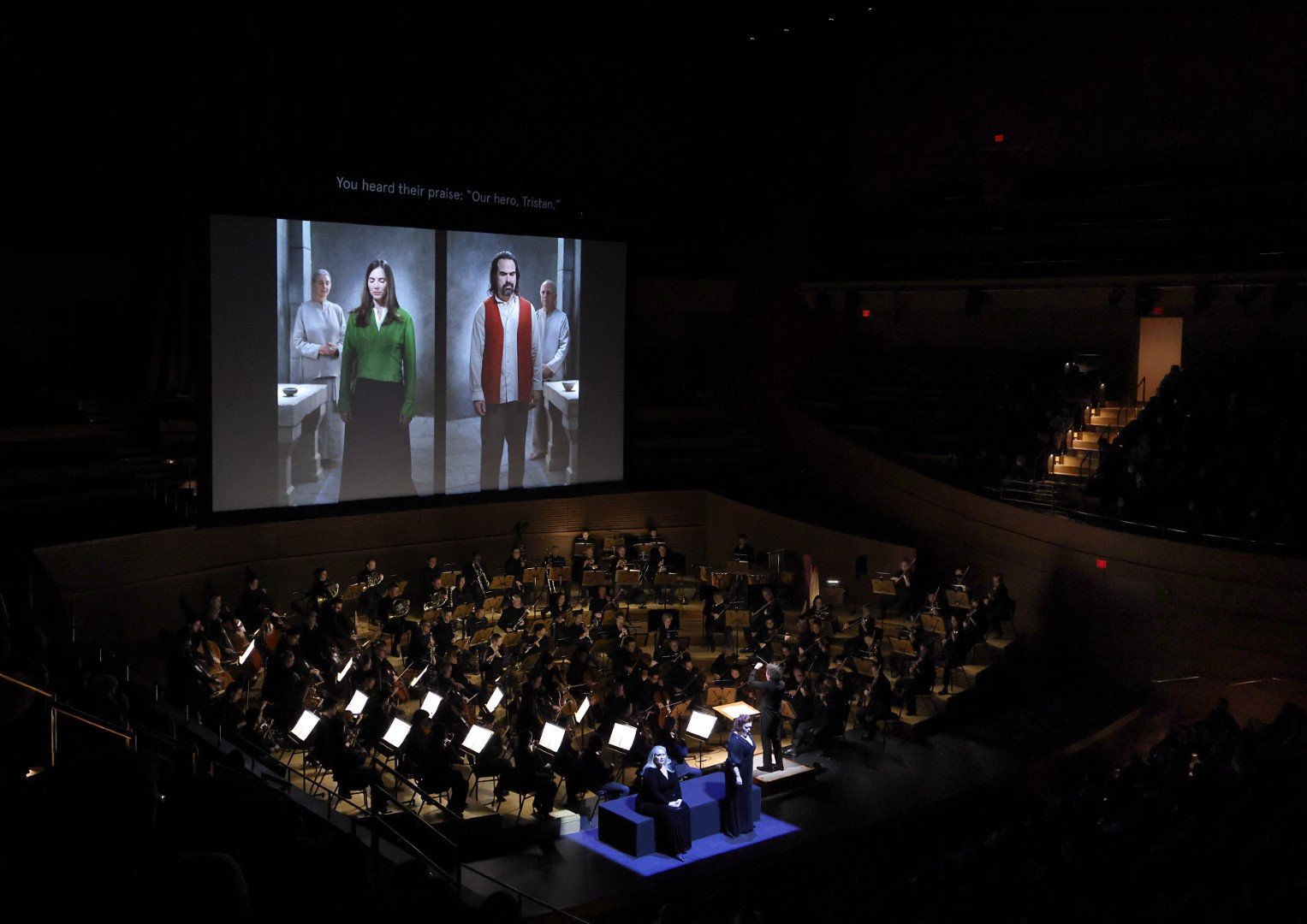
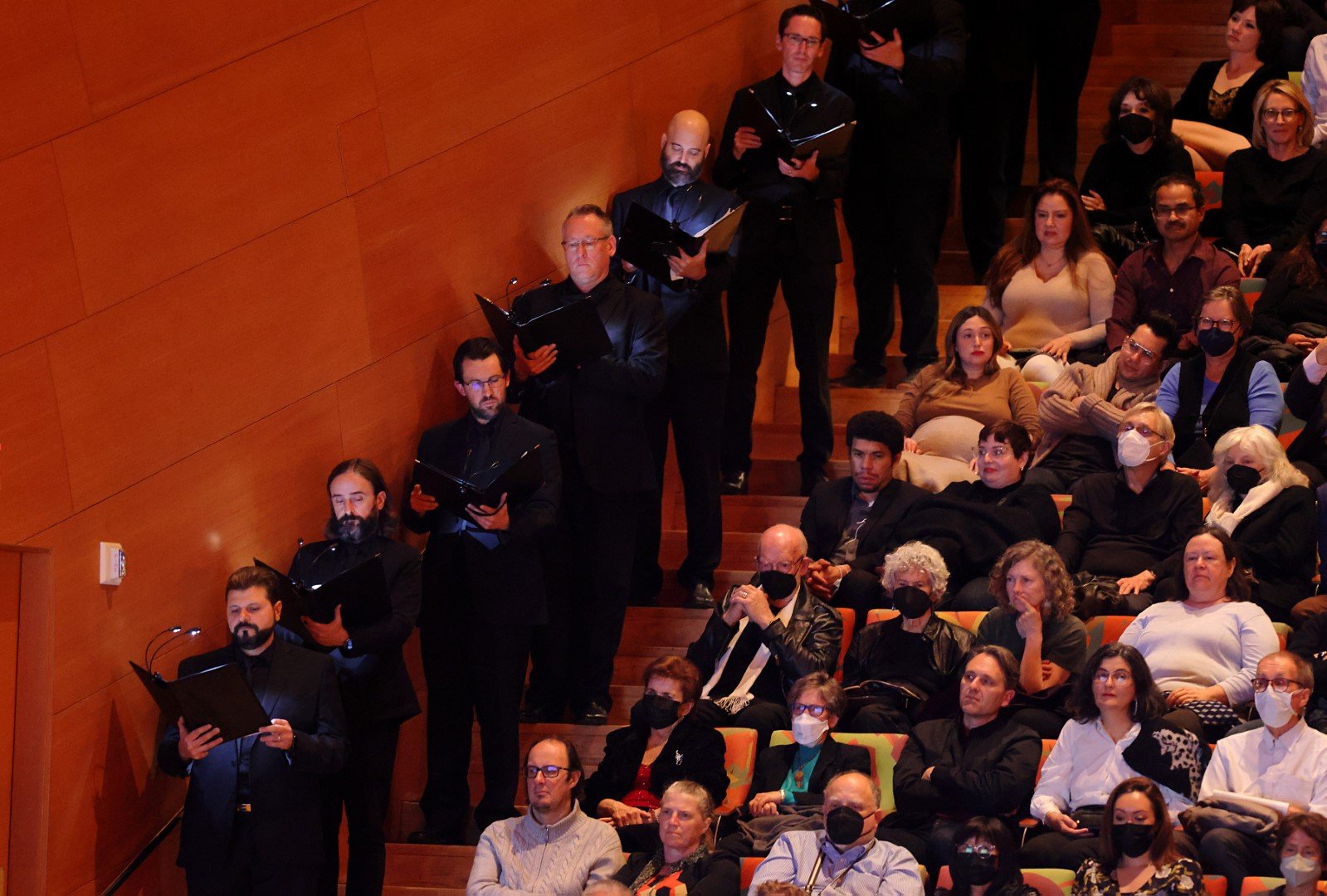

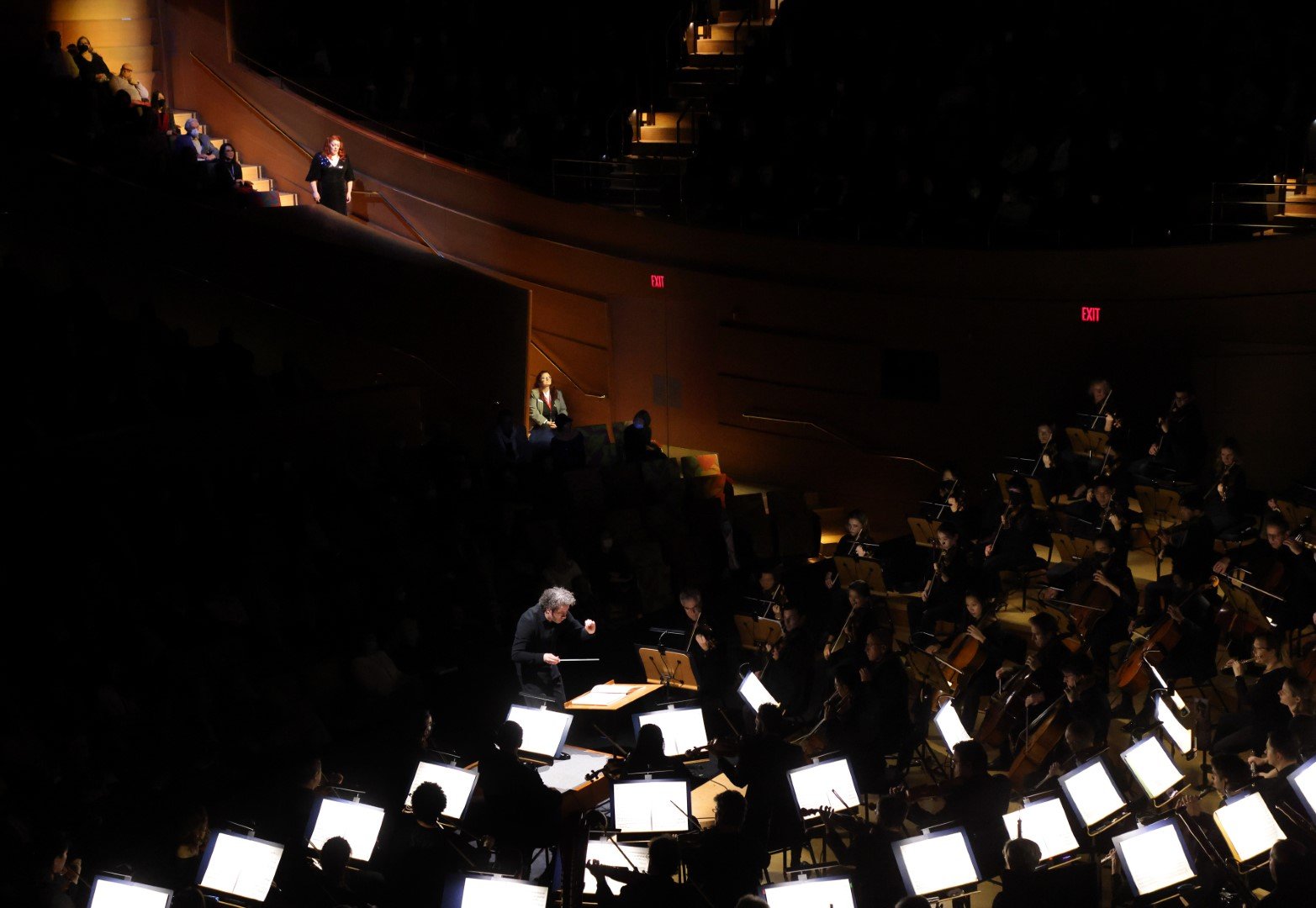
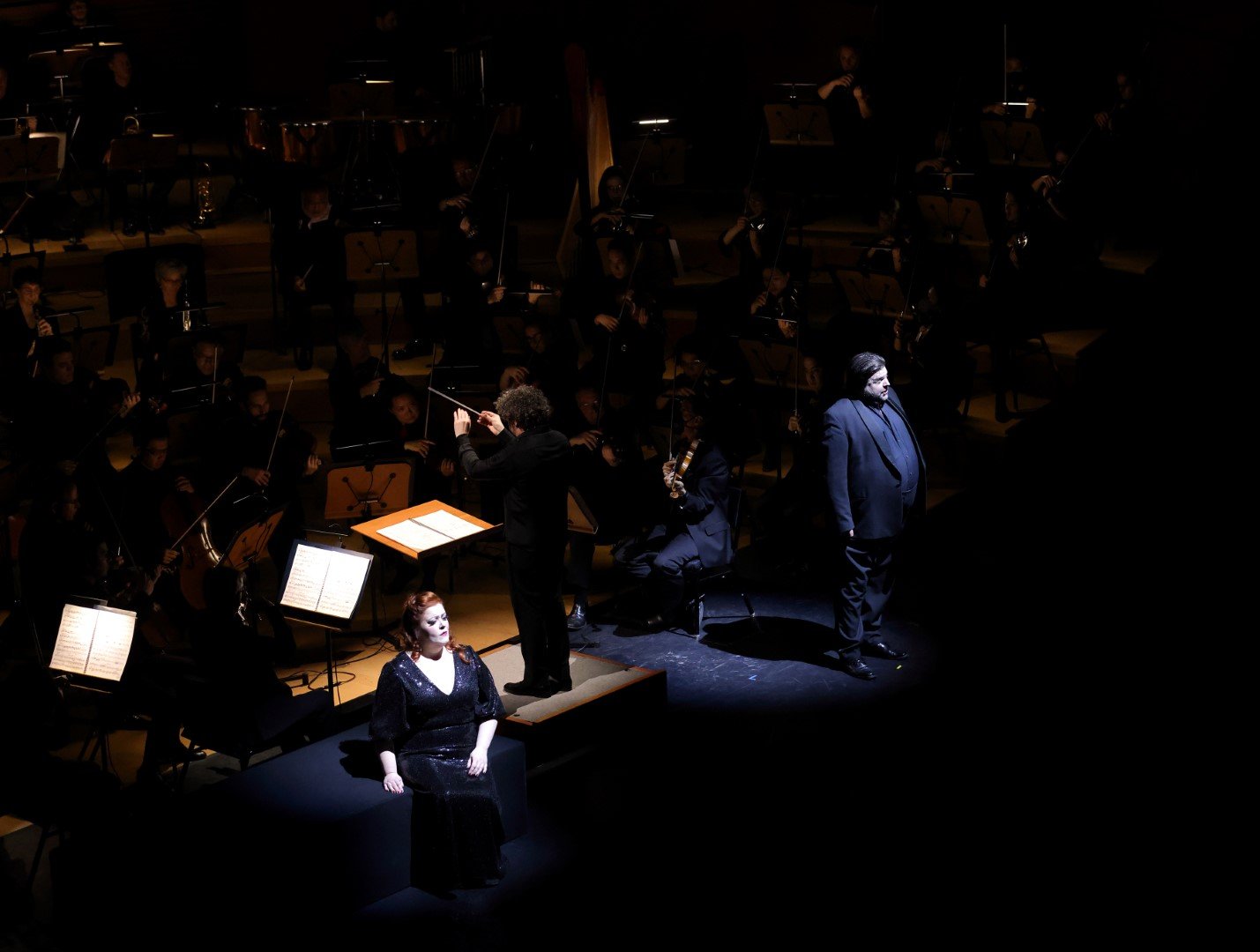
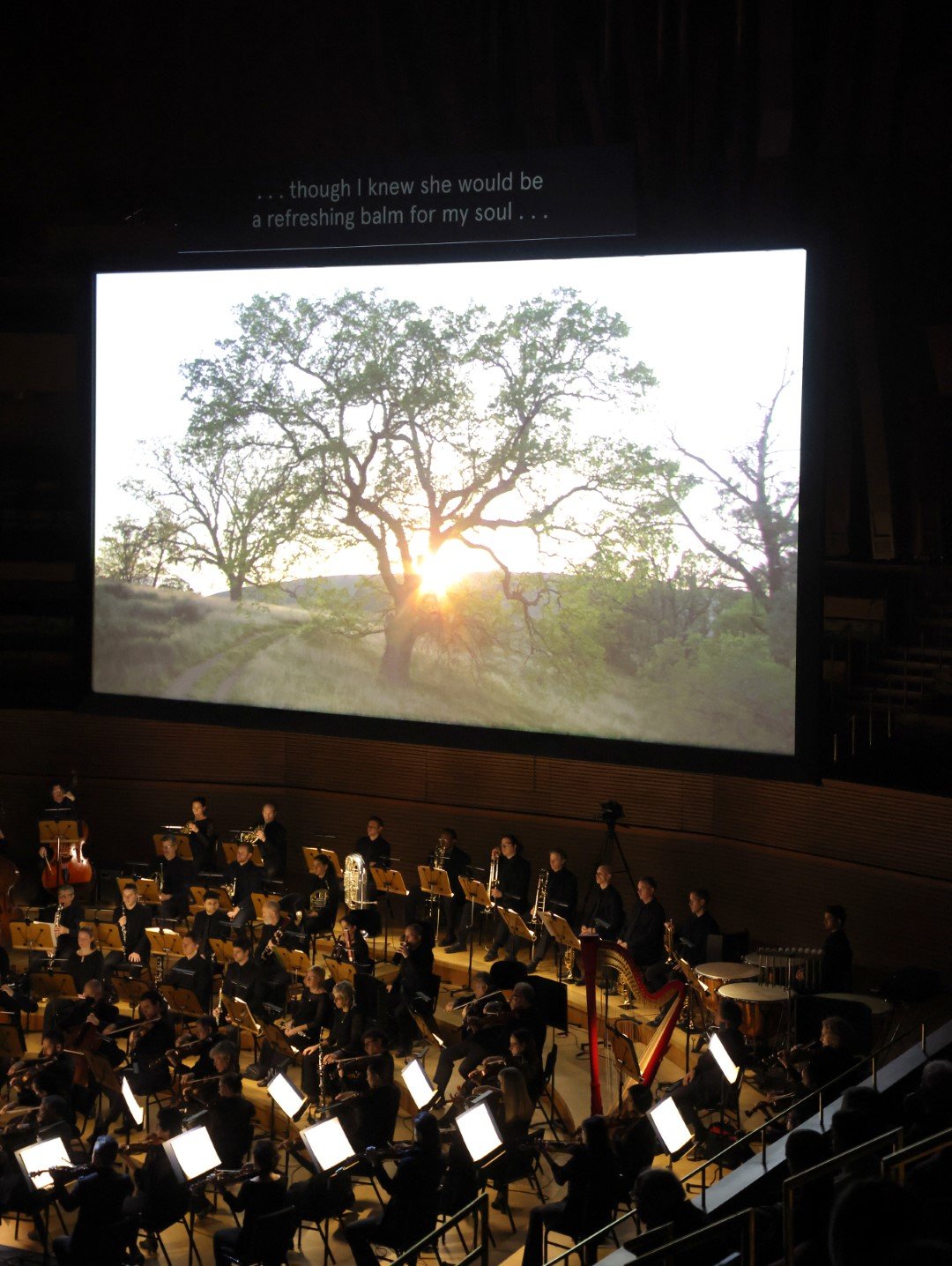
The sheer brilliance of the orchestra proved to be a double-edged sword. Unencumbered by the covered pit of an opera house, the orchestra drowned out the singers in everything above mezzoforte – the Isolde and Brangäne’s dialogs and parts of Liebestod were all but inaudible. Audibility was also affected by the director’s odd placement of singers – in the aisles above the stage, facing one another instead of the audience. Miina-Liisa Värelä’s Isolde was warm, feminine but vastly underpowered next to her maid Brangäne, sung by Okka von der Damerau who counted Brünnhilde among her roles. The role of Isolde calls for a true dramatic soprano, not a high mezzo soprano who can hit the top notes, despite Andrew Porter’s remark that “if a soprano has the notes and tone for Isolde, the orchestra will carry her through.”
Breaking up Tristan und Isolde into three evenings cannot be good for the continuity of the drama, but very good for the vocal health of the singers. As the moribound Tristan, tenor Michael Weinius delivered a trenchant and deeply moving performance in the longest death scene in opera, full of stirring high notes and vibrant tone down to his last word “Isolde” before expiring. Ryan Speedo Green was a fervent Kurwenal and Eric Owen a tragic and noble King Marke. The Los Angeles Master Chorale contributed memorably and thrillingly as the offstage sailors.
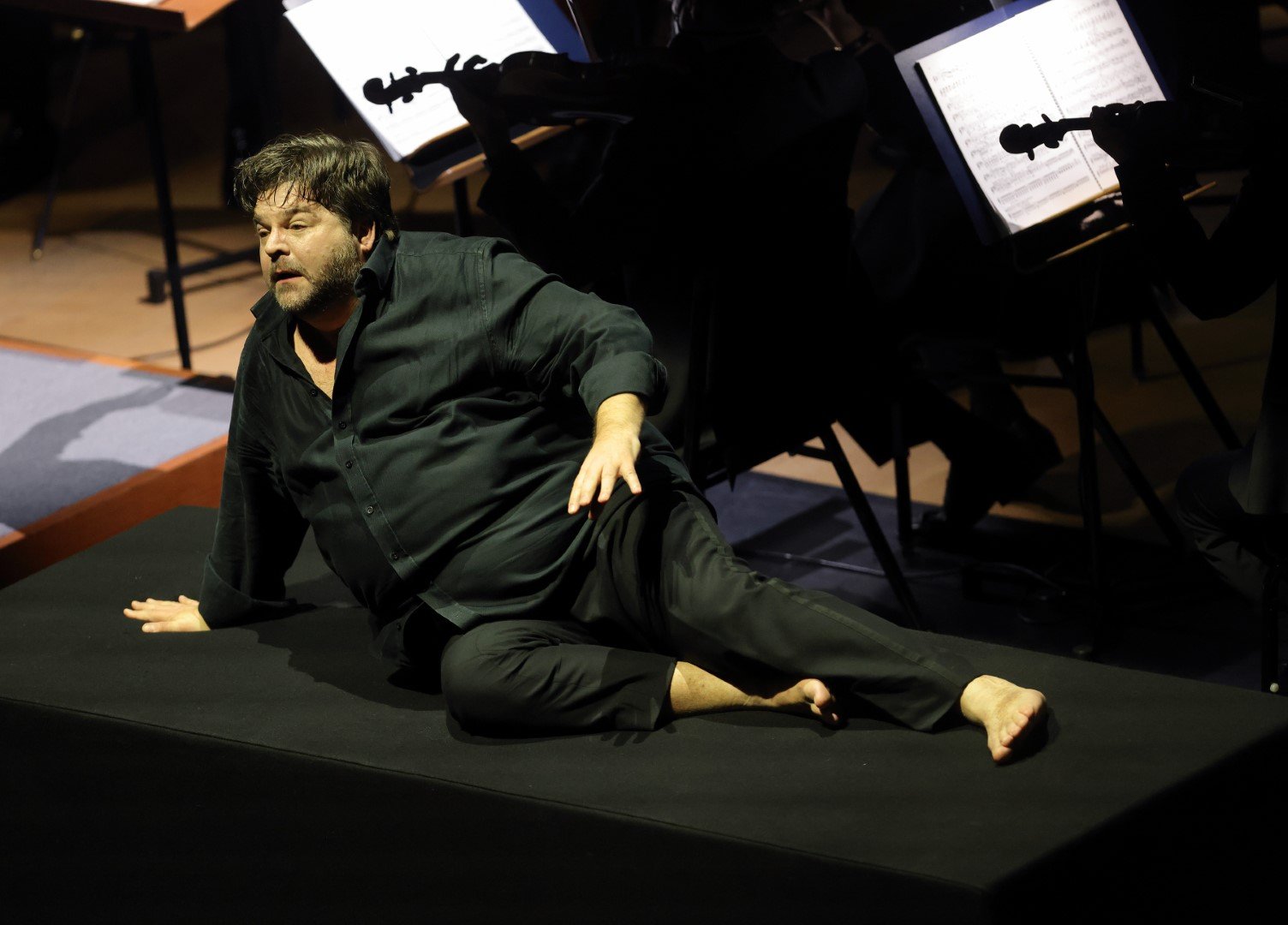
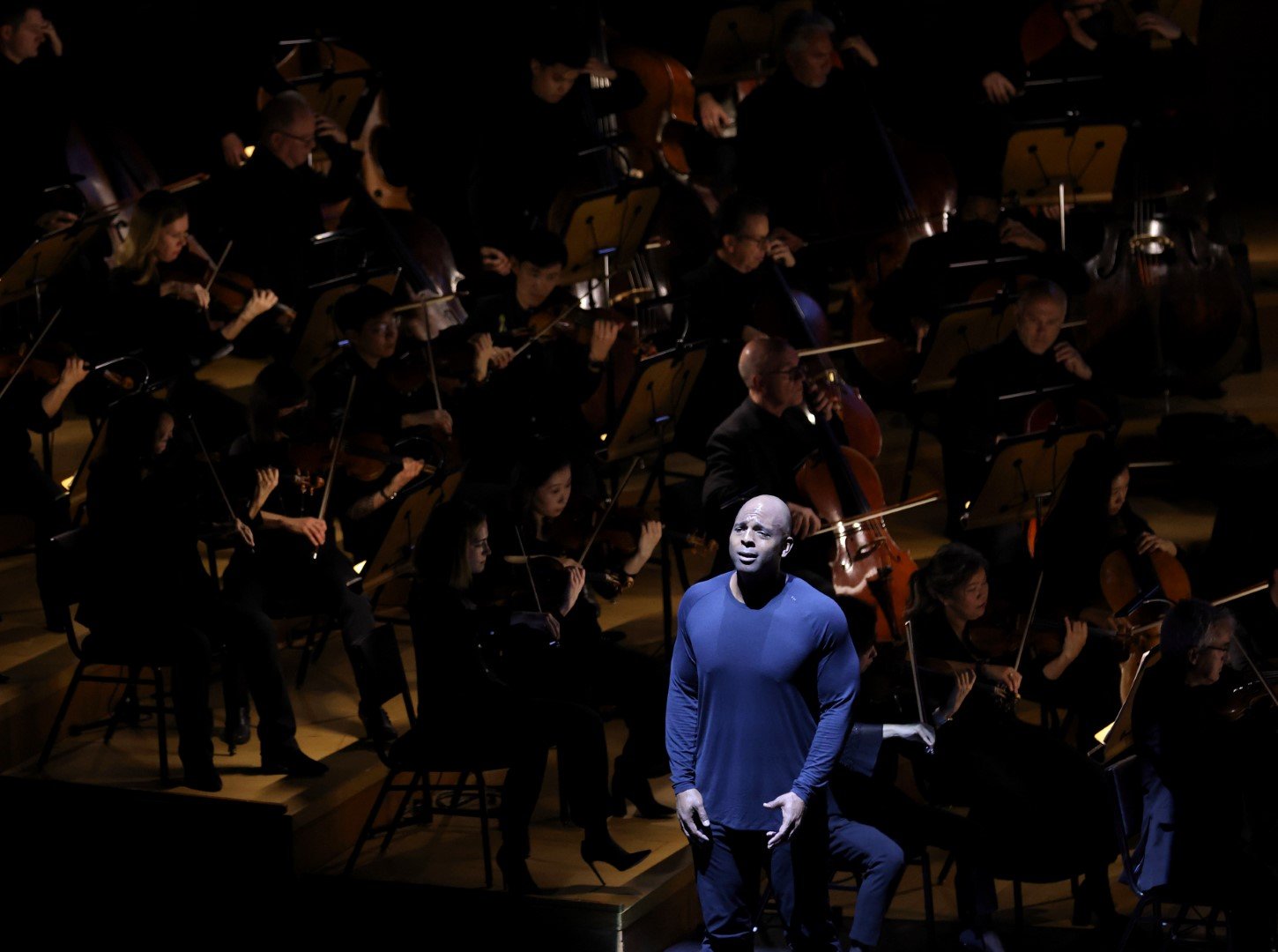
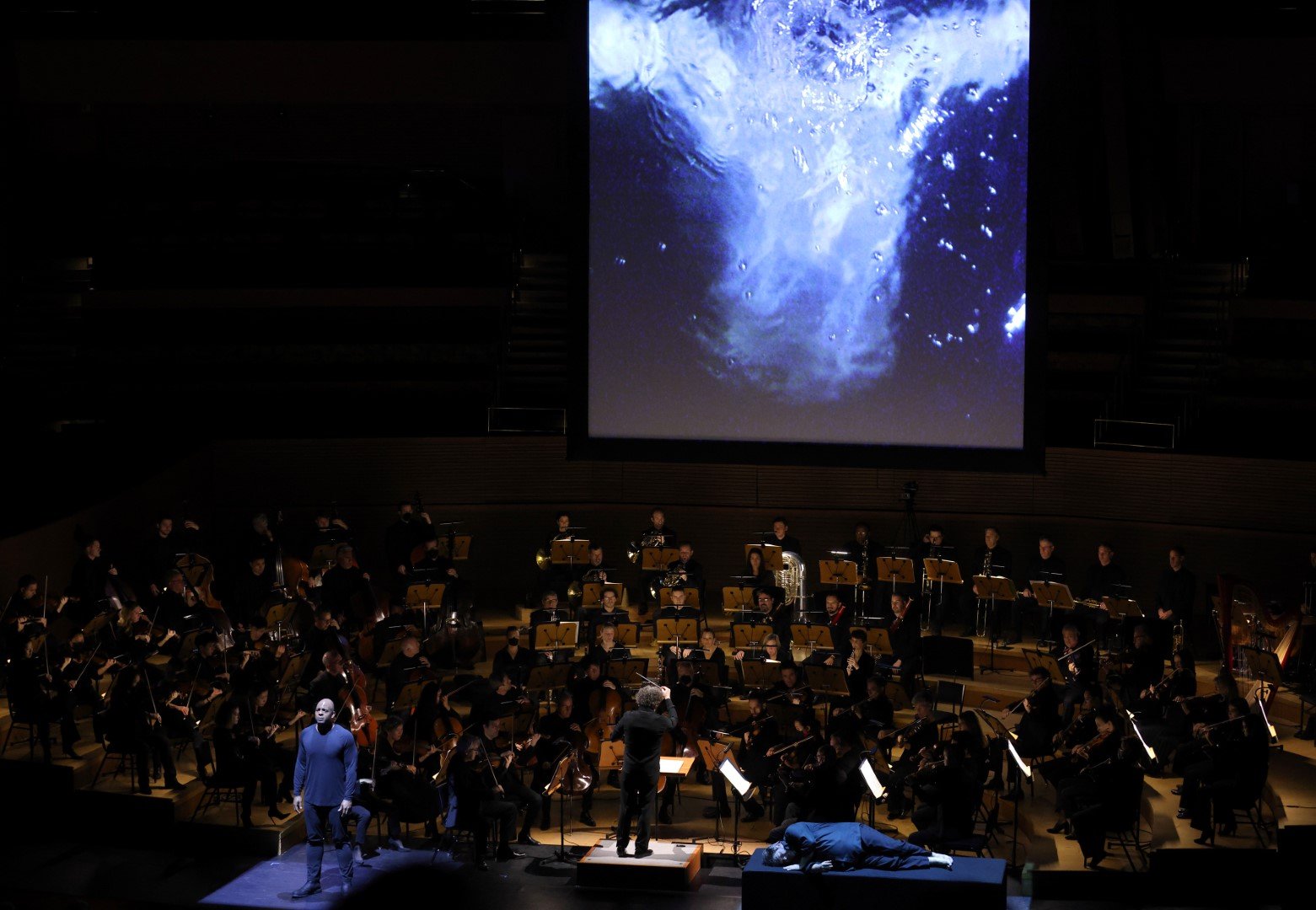
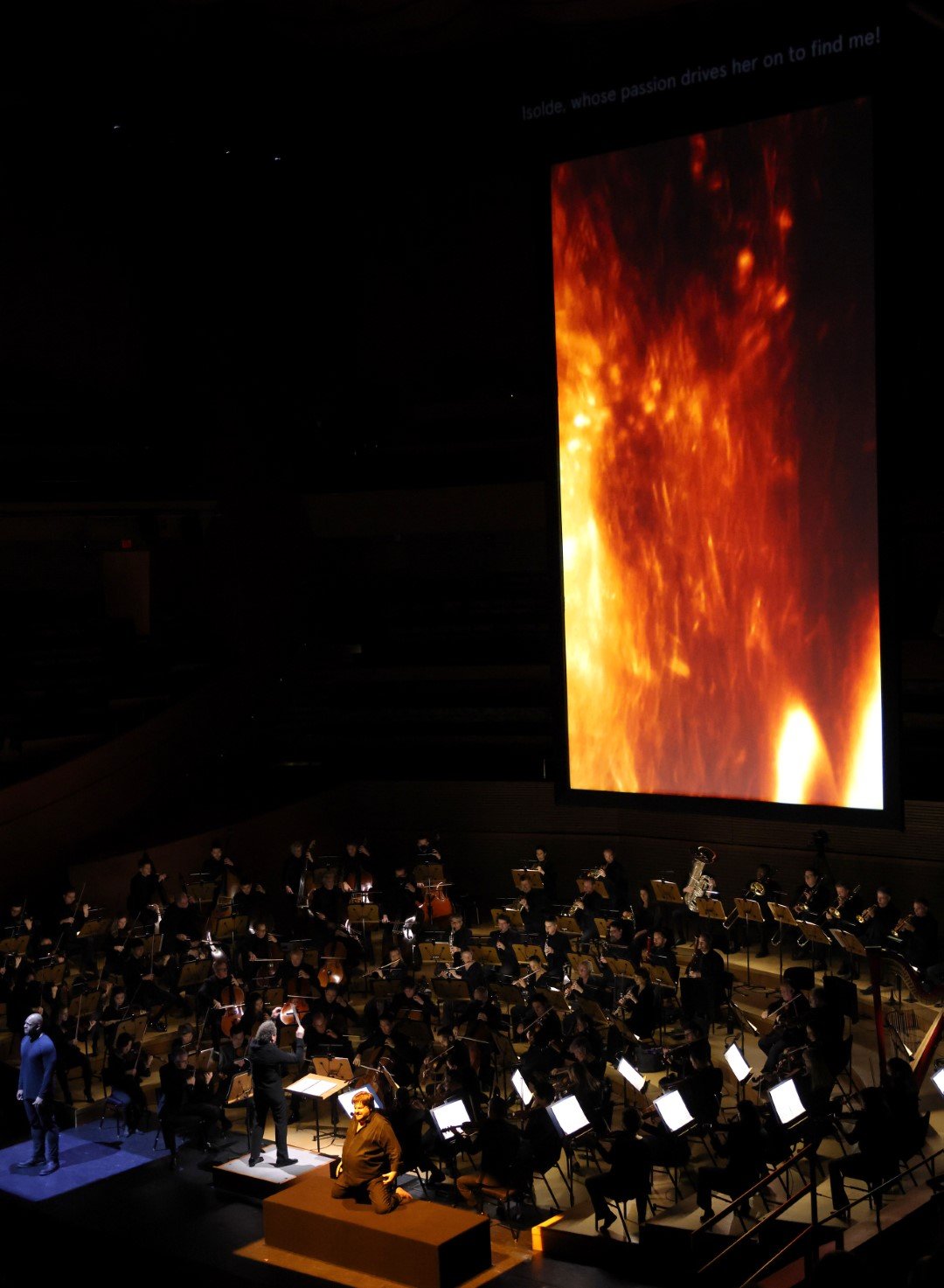
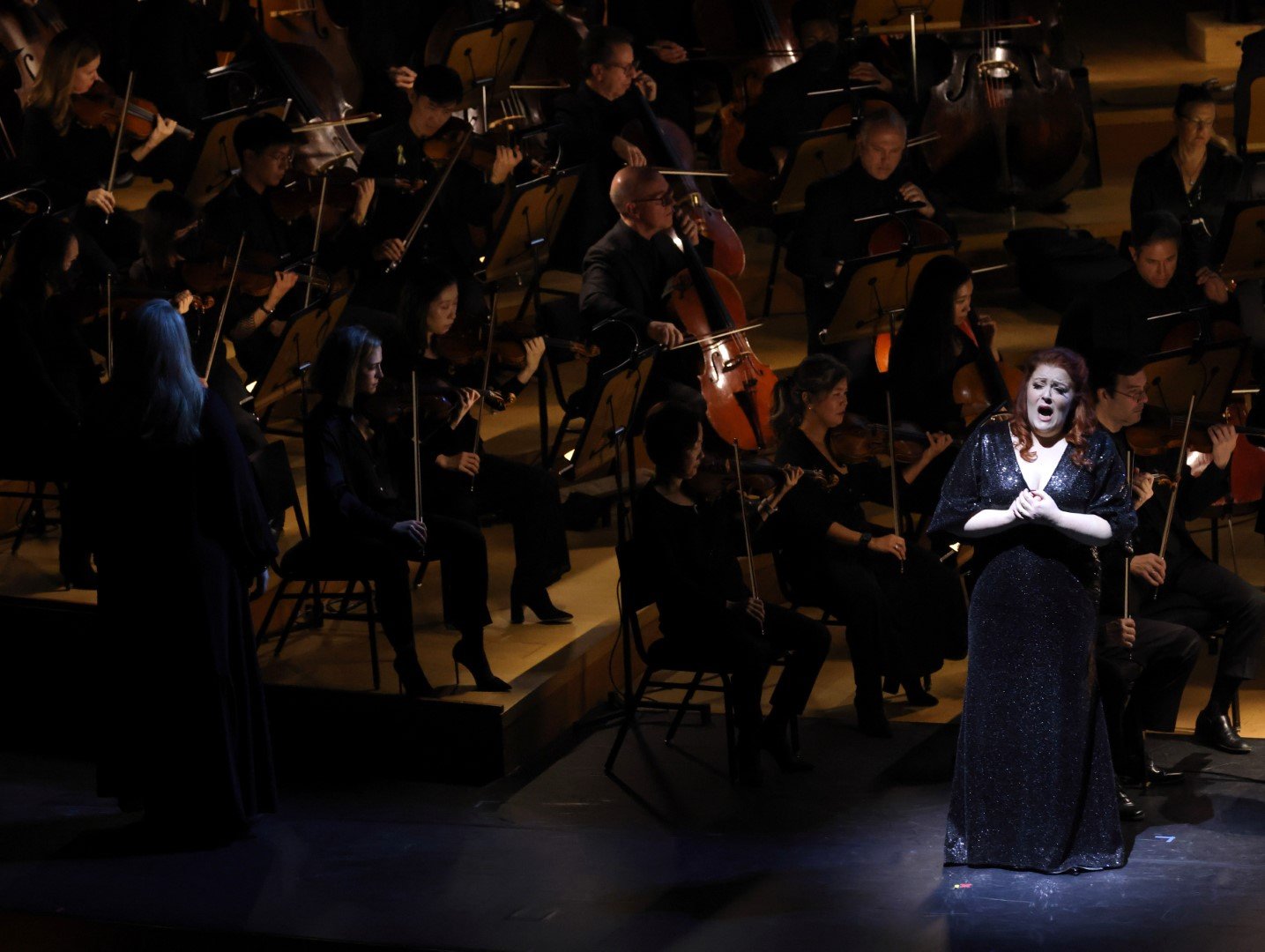
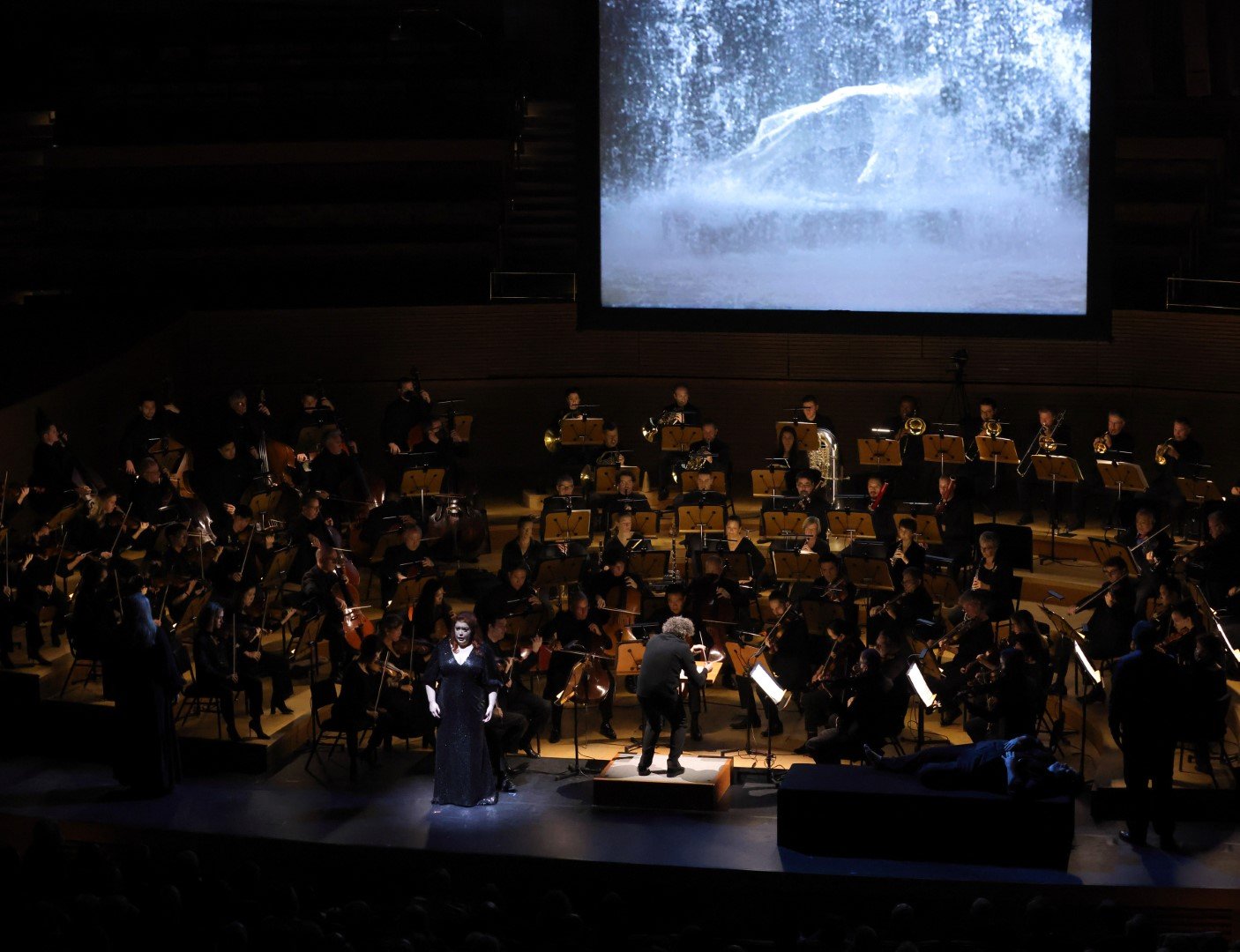
This Tristan ‘project’ was the brainchild of director Peter Sellars and video artist Bill Viola; the latter wrote in the program notes, “I did not want the images to illustrate or represent the story directly. Instead, I wanted to create an image world that existed in parallel to the action on the stage…” In actual execution, the images they conjured up were either gratuitous or distracting. In Act I, the video projection shows an Adam and Eve-like couple stripping in slow-mo down to their birthday suit during Isolde’s long harangue against Tristan’s apparent betrayal. While one appreciates the director’s attempt at dramatic irony – Isolde's internal desire versus her external rage – the execution was predictable and cringe-worthy, eliciting a few groans from the audience. To their credit, there were some memorable images of water and fire in Acts II and III. By and large, however, Wagner was better served by the incomparable playing of the L.A. Phil and the superb singers.
For an object lesson on how modern technology can best serve opera, one can reference Yuval Sharon’s Valkyries Act III in July at the Hollywood Bowl, or Seattle Opera’s beautiful Tristan and Isolde in October. Nonetheless, the L.A. Phil’s latest Tristan Project was an immersive audio-visual experiment in opera that one would not soon forget.
Truman C. Wang is Editor-in-Chief of Classical Voice, whose articles have appeared in the Pasadena Star-News, San Gabriel Valley Tribune, other Southern California publications, as well as the Hawaiian Chinese Daily. He studied Integrative Biology and Music at U.C. Berkeley.


